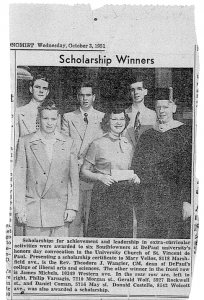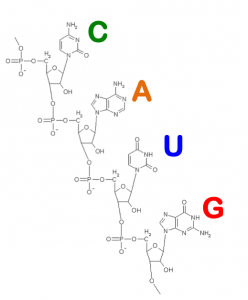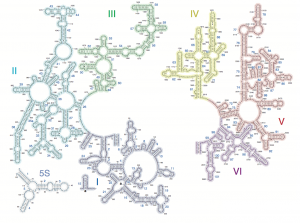Carrying on from part 2 (a) of this commentary on the Science Culture: Where Canada Stands assessment by the Council of Canadian Academies (CAC).
One of the most intriguing aspects of this assessment was the reliance on an unpublished inventory of Canadian science outreach initiatives (informal science education) that was commissioned by the Korean Foundation for the Advancement of Science and Creativity,
The system of organizations, programs, and initiatives that supports science culture in any country is dynamic. As a result, any inventory provides only a snapshot at a single point in time, and risks quickly becoming out of date. No sustained effort has been made to track public science outreach and engagement efforts in Canada at the national or regional level. Some of the Panel’s analysis relies on data from an unpublished inventory of public science communication initiatives in Canada undertaken in 2011 by Bernard Schiele, Anik Landry, and Alexandre Schiele for the Korean Foundation for the Advancement of Science and Creativity (Schiele et al., 2011). This inventory identified over 700 programs and organizations across all provinces and regions in Canada, including over 400 initiatives related to museums, science centres, zoos, or aquariums; 64 associations or NGOs involved in public science outreach; 49 educational initiatives; 60 government policies and programs; and 27 media programs. (An update of this inventory completed by the Panel brings the total closer to 800 programs.) The inventory is used throughout the chapter [chapter five] to characterize different components of the Canadian system supporting public science outreach, communication, and engagement. (p. 130 PDF; p. 98 print)
I’m fascinated by the Korean interest and wonder if this due to perceived excellence or to budgetary considerations. The cynic in me suspects the Korean foundation was interested in the US scene but decided that information from the Canadian scene would be cheaper to acquire and the data could be extrapolated to give a perspective on the US scene.
In addition to the usual suspects (newspapers, television, radio, science centres, etc.), the Expert Panel did recognize the importance of online science sources (they would have looked foolish if they hadn’t),
Canadians are increasingly using the internet to seek out information relating to science. This activity can take the form of generalized searches about science-related issues or more targeted forms of information acquisition. For example, Canadians report using the internet to seek out information on health and medical issues an average of 47 times a year, or nearly every week. Other forms of online exposure to scientific content also appear to be common. For example, 46% of Canadians report having read a blog post or listserv related to science and technology at least once in the last three months, and 62% having watched an online video related to science and technology.
An increasing reliance on the internet as the main source of information about science and technology is consistent with the evolution of the media environment, as well as with survey data from other countries. Based on the Panel’s survey, 17% of Canadians, for example, report reading a printed newspaper daily, while 40% report reading about the news or current events online every day. (p. 13/2 PDF; p. 100/1 print)
In common with the rest of the world, Canadians are producing and enjoying science festivals,
In Canada there are two established, large-scale science festivals. Science Rendezvous [founded in 2008 as per its Wikipedia entry] takes place in about 20 cities across the country and combines a variety of programming to comprise a day-long free event (Science Rendezvous, 2013).
The annual Eureka! Festival in Montréal (see Figure 5.6 [founded in 2007 as per its program list]) has over 100 activities over three days; it attracted over 68,000 attendees in 2012 (Eureka! Festival, 2013). More science festivals have recently been created. The University of Toronto launched the Toronto Science Festival in fall 2013 (UofT, 2013), and Beakerhead, a new festival described as a “collision of art and culture, technology, and engineering,” was launched in 2013 in Calgary (Beakerhead, 2013). Two Canadian cities have also recently won bids to host STEMfest (Saskatoon in 2015 and Halifax in 2018), an international festival of science, technology, engineering, and mathematics (Global STEM States, 2014). (pp. 145/6 PDF; pp. 113/4 PDF)
The assessment notes have a grand total of five radio and television programmes devoted to science: The Nature of Things, Daily Planet, Quirks and Quarks, Découverte, and Les années lumière (p. 150 PDF; p. 118 print) and a dearth of science journalism,
Dedicated science coverage is notably absent from the majority of newspapers and other print journalism in Canada. As shown in Table 5.3, none of the top 11 newspapers by weekly readership in Canada has a dedicated science section, including nationals such as The Globe and Mail and National Post. Nine of these newspapers have dedicated technology sections, which sometimes contain sub-sections with broader coverage of science or environment stories; however, story coverage tends to be dominated by technology or business (or gaming) stories. Few Canadian newspapers have dedicated science journalists on staff, and The Globe and Mail is unique among Canadian papers in having a science reporter, a medicine and health reporter, and a technology reporter. (p. 152 PDF; p. 120 print)
Not stated explicitly in the assessment is this: those science and technology stories you see in the newspaper are syndicated stories, i.e., written by reporters for the Associated Press, Reuters, and other international press organizations or simply reprinted (with credit) from another newspaper.
The report does cover science blogging with this,
Science blogs are another potential source of information about developments in science and technology. A database compiled by the Canadian Science Writers’ Association, as of March of 2013, lists 143 Canadian science blogs, covering all areas of science and other aspects of science such as science policy and science culture (CSWA, 2013). Some blogs are individually authored and administered, while others are affiliated with larger networks or other organizations (e.g., Agence Science-Presse, PLOS Blogs). Canadian science blogger Maryse de la Giroday has also published an annual round-up of Canadian science blogs on her blog (www.frogheart.ca) for the past three years, and a new aggregator of Canadian science blogs was launched in 2013 (www.scienceborealis.ca). [emphases mine]
Data from the Panel’s survey suggest that blogs are becoming a more prominent source of information about science and technology for the general public. As noted at the beginning of the chapter, 46% of Canadians report having read a blog post about science or technology at least once in the past three months. Blogs are also influencing the way that scientific research is carried out and disseminated. A technical critique in a blog post by Canadian microbiologist Rosie Redfield in 2010, for example, catalyzed a widely publicized debate on the validity of a study published in Science, exploring the ability of bacteria to incorporate arsenic into their DNA. The incident demonstrated the potential impact of blogs on mainstream scientific research. CBC highlighted the episode as the Canadian science story of the year (Strauss, 2011), and Nature magazine identified Redfield as one of its 10 newsmakers of the year in 2011 as a result of her efforts to replicate the initial study and publicly document her progress and results (Hayden, 2011).
The impact of online information sources, however, is not limited to blogs, with 42% of Canadians reporting having heard about a science and technology news story though social media sources like Twitter and Facebook in the last three months. And, as noted earlier, the internet is often used to search for information about specific science and technology topics, both for general issues such as climate change, and more personalized information on medical and health issues.(pp. 153/4 PDF; pp. 121/2 print)
Yes, I got a shout out as did Rosie Redfield. We were the only two science bloggers namechecked. (Years ago, the Guardian newspaper was developing a science blog network and the editor claimed he couldn’t find many female science bloggers after fierce criticism of its first list of bloggers. This was immediately repudiated not only by individuals but someone compiled a list of hundreds of female science bloggers.) Still, the perception persists and I’m thrilled that the panel struck out in a different direction. I was also pleased to see Science Borealis (a Canadian science blog aggregator) mentioned. Having been involved with its founding, I’m also delighted its first anniversary was celebrated in Nov. 2014.
I doubt many people know we have a science press organization in Canada, Agence Science-Presse, but perhaps this mention in the assessment will help raise awareness in Canada’s English language media,
Founded in 1978 with the motto Parce que tout le monde s’intéresse à la science (“because everyone is interested in science”), Agence Science-Presse is a not-for-profit organization in Quebec that supports media coverage of science by distributing articles on scientific research or other topical science and technology issues to media outlets in Canada and abroad. The organization also supports science promotion activities aimed at youth. For example, it currently edits and maintains an aggregation of blogs designed for young science enthusiasts and science journalists (Blogue ta science). (p. 154 PDF; p. 122)
The final chapter (the 6th) of the assessment makes five key recommendations for ‘Cultivating a strong science culture’:
- Support lifelong science learning
- Make science inclusive
- Adapt to new technologies
- Enhance science communication and engagement
- Provide national or regional leadership
Presumably the agriculture reference in the chapter title is tongue-in-cheek. Assuming that’s not one of my fantasies, it’s good to see a little humour.
On to the first recommendation, lifelong learning,
… Science centres and museums, science programs on radio and television, science magazines and journalism, and online resources can all help fulfil this function by providing accessible resources for adult science learning, and by anticipating emerging information needs based on topical issues.
Most informal science learning organizations already provide these opportunities to varying degrees; however, this conception of the relative roles of informal and formal science learning providers differs from the traditional understanding, which often emphasizes how informal environments can foster engagement in science (particularly among youth), thereby triggering additional interest and the later acquisition of knowledge (Miller, 2010b). [emphasis mine] Such a focus may be appropriate for youth programming, but neglects the role that these institutions can play in ongoing education for adults, who often seek out information on science based on specific, well-defined interests or needs (e.g., a medical diagnosis, a newspaper article on the threat of a viral pandemic, a new technology brought into the workplace) (Miller, 2012). [emphases mine] Informal science learning providers can take advantage of such opportunities by anticipating these needs, providing useful and accessible information, and then simultaneously building and deepening knowledge of the underlying science through additional content.
I’m glad to see the interest in adult informal science education although the emphasis on health/medical and workplace technology issues suggests the panel underestimates, despite the data from its own survey, Canadians’ curiosity about and interest in science and technology. The panel also underestimates the tenacity with which many gatekeepers hold to the belief that no one is interested in science. It took me two years before a local organizer would talk to me about including one science-themed meeting in his programme (the final paragraph in my April 14, 2014 post describes some of the process and my April 18, 2014 post describes the somewhat disappointing outcome). In the end, it was great to see a science-themed ‘city conversation’ but I don’t believe the organizer found it to be a success, which means it’s likely to be a long time before there’s another one.
The next recommendation, ‘Making science inclusive’, is something that I think needs better practice. If one is going to be the change one wants to see that means getting people onto your expert panels that reflect your inclusiveness and explaining to your audience how your expert panel is inclusive.
The ‘Adapting to new technologies’ recommendation is where I expected to see some mention of the social impact of such emerging technologies as robotics, nanotechnology, synthetic biology, etc. That wasn’t the case,
Science culture in Canada and other countries is now evolving in a rapidly changing technological environment. Individuals are increasingly turning to online sources for information about science and technology, and science communicators and the media are also adapting to the new channels of communication and outreach provided over the internet. As people engage more with new forms of technology in their home and work lives, organizations may be able to identify new ways to take advantage of available technologies to support learning and foster science interest and engagement. At the same time, as noted in Chapter 2, this transition is also challenging traditional models of operation for many organizations such as science centres, museums, and science media providers, forcing them to develop new strategies.
Examples of the use of new technologies to support learning are now commonplace. Nesta, an innovation-oriented organization based in the United Kingdom, conducted a study investigating the extent to which new technologies are transforming learning among students (Luckin et al., 2012) (p. 185 PDF; p. 153 print)
Admittedly, the panel was not charged with looking too far into the future but it does seem odd that in a science culture report there isn’t much mention (other than a cursory comment in an early chapter) of these emerging technologies and the major changes they are bringing with them. If nothing else, the panel might have wanted to make mention of artificial intelligence how the increasing role of automated systems may be affecting science culture in Canada. For example, in my July 16, 2014 post I described a deal Associated Press (AP) signed with a company that automates the process of writing sports and business stories. You may well have read a business story (AP contracted for business stories) written by an artificial intelligence system or, if you prefer the term, an algorithm.
The recommendation for ‘Enhancing science communication and engagement’ is where I believe the Expert Panel should be offered a bouquet,
… Given the significance of government science in many areas of research, government science communication constitutes an important vector for increasing public awareness and understanding about science. In Canada current policies governing how scientists working in federal departments and agencies are allowed to interact with the media and the public have come under heavy criticism in recent years …
Concerns about the federal government’s current policies on government scientists’ communication with the media have been widely reported in Canadian and international
press in recent years (e.g., Ghosh, 2012; CBC, 2013c; Gatehouse, 2013; Hume, 2013; Mancini, 2013; Munro, 2013). These concerns were also recently voiced by the editorial board of Nature (2012), which unfavourably compared Canada’s current approach with the more open policies now in place in the United States. Scientists at many U.S. federal agencies are free to speak to the media without prior departmental approval, and to
express their personal views as long as they clearly state that they are not speaking on behalf of the government. In response to such concerns, and to a formal complaint filed by the Environmental Law Clinic at the University of Victoria and Democracy Watch, on April 2, 2013 Canada’s Information Commissioner launched an investigation into whether current policies and policy instruments in seven federal departments and agencies are “restricting or prohibiting government scientists from speaking with or sharing research with the media and the Canadian public” (OICC, 2013).
Since these concerns have come to light, many current and former government scientists have discussed how these policies have affected their interactions with the media. Marley Waiser, a former scientist with Environment Canada, has spoken about how that department’s policies prevented her from discussing her research on chemical pollutants in Wascana Creek near Regina (CBC, 2013c). Dr. Kristi Miller, a geneticist with the Department of Fisheries and Oceans, was reportedly prevented from speaking publicly about a study she published in Science, which investigated whether a viral infection might be the cause of declines in Sockeye salmon stocks in the Fraser River (Munro, 2011).
According to data from Statistics Canada (2012), nearly 20,000 science and technology professionals work for the federal government. The ability of these researchers to communicate with the media and the Canadian public has a clear bearing on Canada’s science culture. Properly supported, government scientists can serve as a useful conduit for informing the public about their scientific work, and engaging the public in discussions about the social relevance of their research; however, the concerns reported above raise questions about the extent to which current federal policies in Canada are limiting these opportunities for public communication and engagement. (pp. 190/1 PDF; p. 158/9 print)
Kudos for including the information and for this passage as well,
Many organizations including science centres and museums, research centres, and even governments may be perceived as having a science promotion agenda that portrays only the benefits of science. As a result, these organizations are not always seen as promoters of debate through questioning, which is a crucial part of the scientific process. Acknowledging complexity and controversy is another means to improve the quality of public engagement in science in a range of different contexts. (p. 195 PDF; p. 163 print)
One last happy note, which is about integrating the arts and design into the STEM (science, technology, engineering, and mathematics communities),
Linking Science to the Arts and Design U.S. advocates for “STEM to STEAM” call for an incorporation of the arts in discussions of science, technology, engineering, and mathematics in an effort to “achieve a synergistic balance” (Piro, 2010). They cite positive outcomes such as cognitive development, reasoning skills, and concentration abilities. Piro (2010) argues that “if creativity, collaboration, communication, and critical thinking — all touted as hallmark skills for 21st-century success — are to be cultivated, we need to ensure that STEM subjects are drawn closer to the arts.” Such approaches offer new techniques to engage both student and adult audiences in science learning and engagement opportunities.
What I find fascinating about this STEM to STEAM movement is that many of these folks don’t seem to realize is that until fairly recently the arts and sciences recently have always been closely allied. James Clerk Maxwell was also a poet, not uncommon amongst 19th century scientists.
In Canada one example of this approach is found in the work of Michael R. Hayden, who has conducted extensive genetic research on Huntington disease. In the lead-up to the 2000 Human Genome Project World Conference, Hayden commissioned Vancouver’s Electric Company Theatre to fuse “the spheres of science and art in a play that explored the implications of the revolutionary technology of the Human Genome Project” (ECT, n.d.). This play, The Score, was later adapted into a film. Hayden believes that his play “transforms the scientific ideas explored in the world of the laboratory into universal themes of human identity, freedom and creativity, and opens up a door for a discussion between the scientific community and the public in general” (Genome Canada, 2006). (p. 196 PDF; p. 164 print)
I’m not sure why the last recommendation presents an either/or choice, ‘Providing national or regional leadership’, while the following content suggests a much more fluid state,
… it should be recognized that establishing a national or regional vision for science culture is not solely the prerogative of government. Such a vision requires broad support and participation from the community of affected stakeholders to be effective, and can also emerge from that community in the absence of a strong governmental role.
The final chapter (the seventh) restates the points the panel has made throughout its report. Unexpectedly, part 2 got bigger, ’nuff said.
* Removed word from this sentence: “For example, in my July 16, 2014 post I [made removed] described a deal Associated Press (AP) signed with a company that automates the process of writing sports and business stories.” on Nov. 17, 2020.



